Result Request

Introduction
The Result Request function has been added for Parasitics Extraction solution.
The Result Request allows the user to define the set of outputs for his study.
The Result Request dialog box is different for S-Parameter computation and Impedance computation.
List of Result Request for Parasitics Extraction solution
| Result request | SimLab Solution | |
|---|---|---|
| PE | ||
| S-Parameter Computation | Active Ports (All or Custom) | |
| Touchstone Export | Create and Export a Touchstone File | |
| Frequency Unit | ||
| Network Parameter Type | ||
| Network Parameter Format | ||
| SPICE Export | Export in SPICE Format | |
Impedance Computation
The Result Request dialog box for Impedance Computation is the following:
Active Ports
In this part of the result request, the calculation of the Impedances can be done on All ports, or by choosing some of them by selecting the Custom case.
Note that if you select the Custom case, the self Impedance Zii will be computed only on the selected ports. The mutual Impedance Zij will be calculated with all the ports (with j represents the index of the active port). For example, in the figure below the self impedances that will be computed are Z11 and Z33, and the mutual impedances are Z21 Z31 Z13 Z23.
The short-circuited ports are not available in the result request for the impedance computation.
The resulting Impedance curves will be named following this convention: “Z-MAGNITUDE__Port1_Name Port2_Name” for the magnitude, and “Z_PHASE__ Port1_Name Port2_Name (deg)” for the argument.
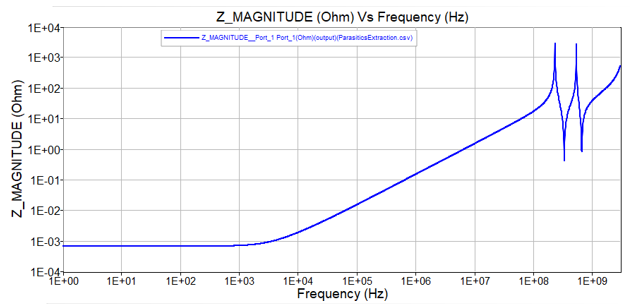
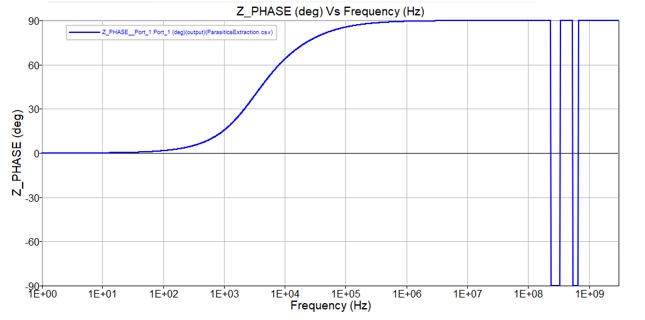
Compute RLC values
This option allows to deduce Resistance (R), Inductance (L), and Capacitance (C) values from impedance (Z) value. In case of a frequency (f) sweep, the according RLC values are frequency dependent curves and can be seen in the 2DPlot. The computation is done as following:When the option “Include Parasitic Capacitance effects” in Solver Settings is not selected, the C values will not be computed.
Examples:
| Open Loop | |
|---|---|
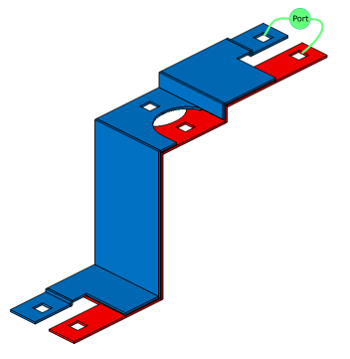 |
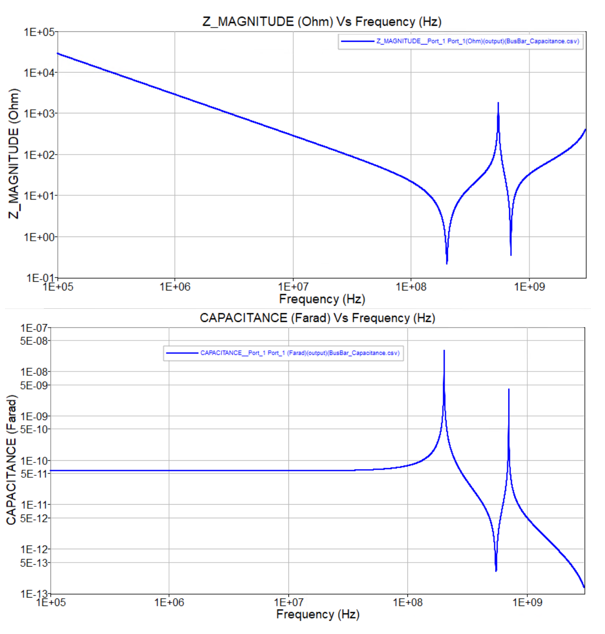 |
| Closed loop | |
|---|---|
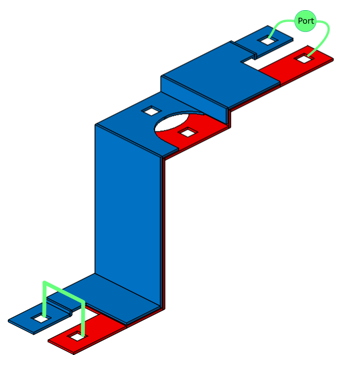 |
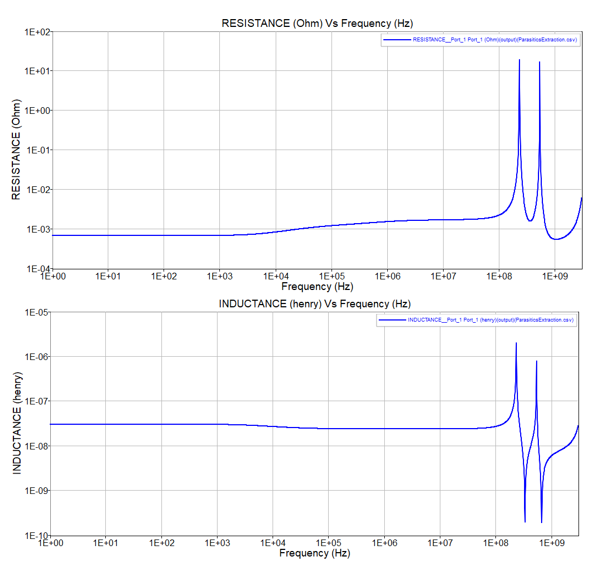 |
S-Parameter Computation
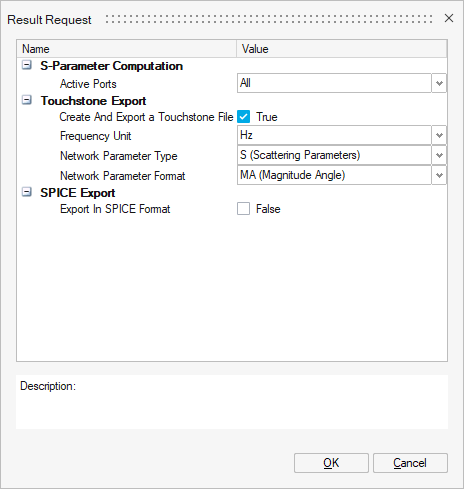
In this part of the result request, the calculation of the S-Parameters can be done on All ports, or by choosing some of them by selecting the Custom case.
Note that if you select the Custom case, the reflection coefficients Sii will be computed only on the selected ports. The transmission coefficients Sij will be calculated with all the ports (with j represents the index of the active port). For example, in the figure below the reflection coefficients that will be computed are S11 and S33, and the transmission coefficients are S21 S31 S13 S23.
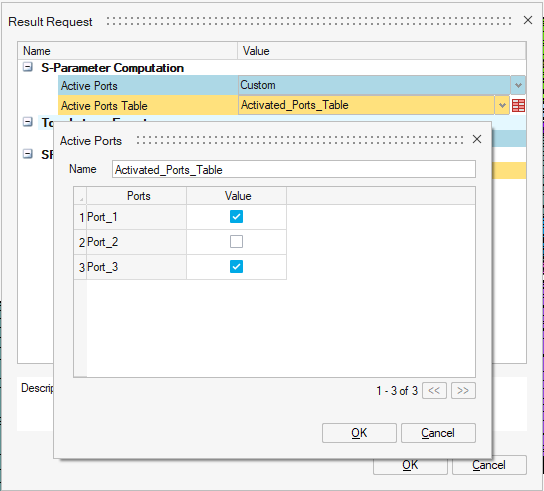
The resulting S-Parameter curves will be named following this convention: “S-MAGNITUDE__Port1_Name Port2_Name” for the magnitude, and “S_PHASE__ Port1_Name Port2_Name (deg)” for the argument.
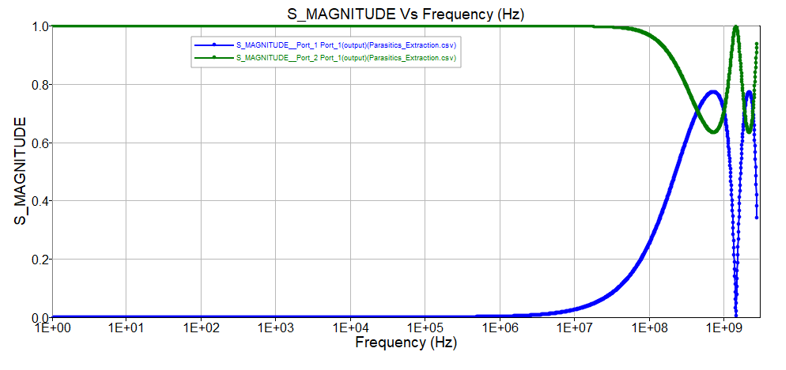

with:
[G0] and [Z0] are diagonal matrices (terms outside the diagonal are zero) where each term is related to a port reference impedance Zn and :
This allows the well computation using Model Order Reduction, without considering the resistances of the ports which can introduce inaccuracies due to their high value compared to the interconnected parasites.
T. Reveyrand, "Multiport conversions between S, Z, Y, h, ABCD, and T parameters," 2018 International Workshop on Integrated Nonlinear Microwave and Millimetre-wave Circuits (INMMIC), Brive La Gaillarde, France, 2018, pp. 1-3, doi: 10.1109/INMMIC.2018.8430023. keywords: {Scattering parameters;Impedance;Microwave devices;Mathematical model;Matrix converters;Scattering;Multiport;Embedding;De-embedding;S-parameters;Calibration;Education}
Touchstone Export
In this part of the result request, S-Parameters can be exported in conventional Touchstone format . The resulting file will have a .SnP extension, where n is the number of ports. For example: for three ports, the file extension will be .S3P.
Note that the Port numbers in the file exported are indexed based on the order in which they appear in the list of ports on the Loads and Constraints Browser tree, not on their labels.
The Touchstone file can be written using a specific frequency unit, from Hz to GHz using the Frequency Unit combo box. Scattering parameters are the only Network Parameter Type supported, Z-Parameters or others are not. For S-Parameters values, they can either be written in magnitude angle format or in real imaginary one. This can be done by choosing the appropriate format from the Network Parameter Format combo box. These settings do not affect 2D plotting curves in SimLab.
The reference impedance in the file is unique for all ports, this export does not support multi-reference impedances. The chosen impedance is that of the first port.
Note that the solution does not normalize the S-parameter values to a global reference impedance when exporting to Touchstone file. The values are referenced to the impedance specified on each port.
SPICE Export
In this part of the result request, the S-parameters can be converted to a SPICE netlist and exported to a .subckt file in the Results folder. The SPICE model resulting uses an absolute port reference where each port is referenced to the SPICE global ground n0.